I stumbled upon this fantastic Parmesan Cheese Ice Cream recipe, while I was researching the history of ice cream. This recipe comes from the The Complete Confectioner cookbook written by Frederick Nutt. It was first published in 1789. Nutt was a professional confectioner in London. He was an apprentice to a well-known Italian confectioner Domenico Negri, owner of “Pot& Pineapple” at London’s Berkley-Square, one of the first shops to popularize ice cream in England.
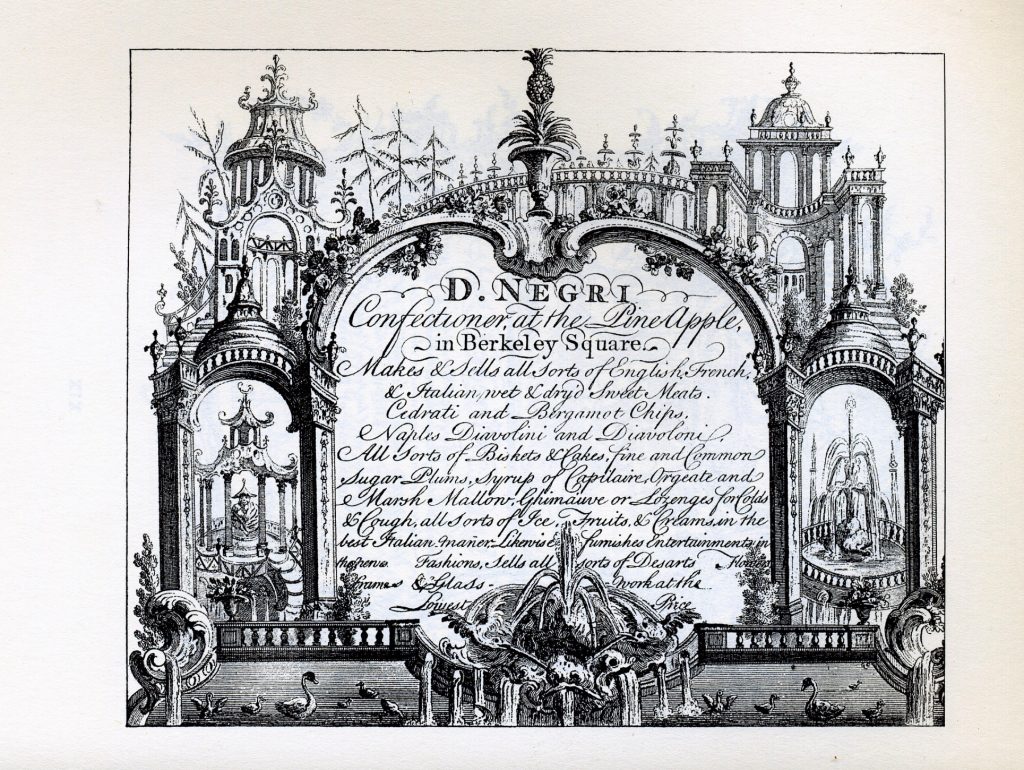
Unusual Ice Cream Flavors Are Nothing New
In The Complete Confectioner Nutt intended to teach hostesses and their housekeepers “perfect knowledge of confectionary.” He targeted at “those unprovided females in particular, who wish to improve, and perhaps to excel, however narrow their abilities, will find in the following sheets wherewith to satisfy their desires with regard to every information in the business (confectionery).” His book got so popular that it was published across the Atlantic Ocean in the new America in 1807.
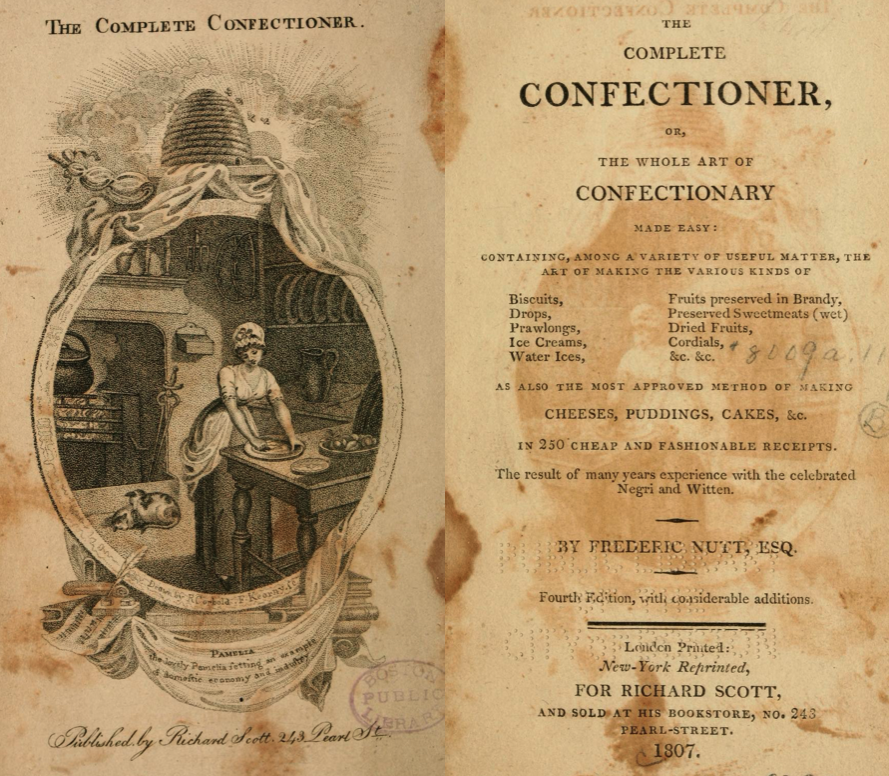
This recipe stood out to me because it was flavored with parmesan cheese. Back to Nutt’s time, fruit flavored ice creams were the most popular. Out of thirty-one different ice cream recipes offered by Nutt, twenty were made with fresh fruits, fruit jams, or syrups. Parmesan cheese was the only cheese flavor used by Nutt to flavor ice cream.

Frederick Nutt’s Historic Parmesan Cheese Ice Cream Recipe:
“Take six eggs, half a pint of syrup, and a pint of cream; put them into a stewpan and boil them until it begins to thicken; then rasp 3 ounces of Parmesan cheese, mix and pass them through a sieve, and freeze it.”

To freeze the cream, Nutt used the old-style “freezing pot” method. What is the “freezing pot” method?
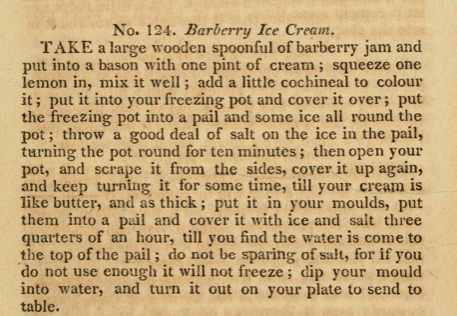
In the 18th and early 19th century, confectioners made ice cream in a freezing pot, or sarbotière (see the illustration below), a cylinder-shape pot made of pewter or tin. It was put in a pail wooden pail containing a mixture of ice and salt. A houlette (see the illustration below), or an ice paddle, was used to scrape the cream from the bottom and sides of the freezing pot.
How To Freeze Your Ice Cream The
Nutt provides detailed instructions on how to freeze a cream mixture. “Put it (the cream mixture) into your freezing pot and cover it over; put the freezing pot into a pail and some ice all round the pot; throw a good deal of salt on the ice in the pail, turning the pot round for ten minutes; then open your pot, and scrape it from the sides, cover it up again, and keep turning it for some time, till your cream is like butter, and as thick.”
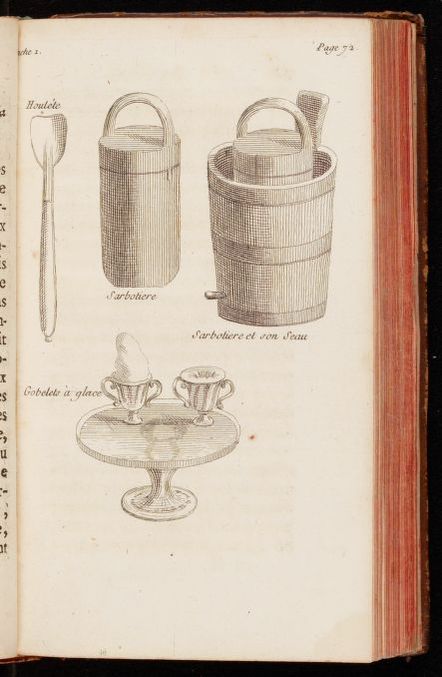
Ice Cream Moulds Were Popular In The 18th Century
Eighteen-century confectioners also loved to mould their ice cream into different shapes. Ice cream moulds were made of pewter, cooper, or tin and shaped to resemble fruits, animals, cheese, and vegetables, etc. The key point was to imitate nature and disguise the food itself. Some confectioners even went further to color ice creams after they were unmolded. Nutt didn’t specify what shape of moulds should be used for the parmesan cheese recipe. But in the late 18th and early 19th century, ice cream in the shape of a cheese wedge was very popular. A French confectioner, Joseph Gilliers even suggested to cover a wedge-shaped ice cream with caramelized sugar to represent the cheese rind.
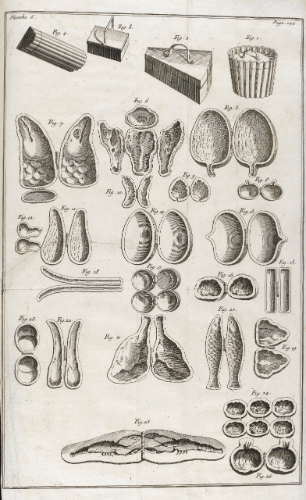
Nutt also provided detailed instructions to mould ice creams. “Put it in your moulds, put them into a pail and cover it with ice and salt three quarters of an hour, till you find the water is come to the top of the pail; do not be sparing of salt, for if you do not use enough it will not freeze; dip your mould into water, and turn it out on your plate to send to table.”
If you want to know more about the history of ice cream, I have a short series of videos for you.
- History of Ice Cream Episode 1 (includes video)
- History of Ice Cream Episode 2 (Includes this historic ice cream recipe)
- History of Ice Cream Episode 3 (includes video)
Parmesan Cheese Ice Cream Recipe
- Services: 4-6 People
- Prep Time: 55 minutes
- Wait Time: 3 hours minimum
Ingredients
- 6 large eggs
- 1 cup simple syrup*
- 2 cups heavy whipping cream
- 3oz freshly grated Parmesan Cheese*
Note:
*To make simple cane sugar syrup, combine 1 cup white sugar with 1 cup water in a medium saucepan. bring to boil, stir until sugar has dissolved. Let it cool before use.
*Please not to use prepackaged shredded parmesan cheese. Cheese manufacturers use preservatives like potato starch and other chemicals to keep the shreds from sticking together. As a result, pre-grated cheese don’t melt together as well when cooking.
Instructions
- In a medium saucepan, combine and whisk eggs, syrup, and cream until smooth. Cook and stir the mixture over medium-low heat until thickened but don’t bring it to boil.
- Reduce heat to low. Add in grated parmesan cheese and fold into the cream mixture until well combined.
- Use a spoon to check if the custard mixture is ready. Dip the spoon into the custard and take out. Run your finger through it. If you see a visible stripe on the spoon, the custard is ready. Remove from heat.
- Strain the custard through a fine-mesh sieve into a clean bowl into order to remove any bits that might have curdled. Let the mixture cool to room temperature. Cover the mixture bowl with plastic wrap and refrigerate at least 2 hours or overnight.
- No Churning: pour the chilled mixture into a freezer safe container and store in the freezer until the parmesan cheese cream firms.
- Churning: if you use an ice cream machine, transfer the chilled mixture into the churning chamber and process according to the manufacturer’s instructions.
References for this Historic Parmesan Cheese Ice Cream Recipe:
Day, Ivan. “The Art of Confectionery.” https://www.historicfood.com/The%20Art%20of%20Confectionery.pdf.
Gilliers, Joseph. Le Cannameliste français. Nancy: Chez Jean- Baptiste- Hiacinthe Leclerc, 1768.
Nutt, Frederick. The Complete Confectioner. 4th ed. 1789. Reprint, London: Richard Scott, 1807.
Quinzio, Jeri. Of Sugar and Snow: A History of Ice Cream Making. Berkeley, University of California Press, 2009.
2 replies on “200-Year-Old Parmesan Cheese Ice Cream Recipe”
What size eggs and how many if I only have large?
🥚 Egg-cellent question Adina! We used large eggs for the recipe. I have also updated the recipe on this post to specify the size of eggs used. If you end up making the ice cream 🍨 Lu and I would love to hear what you think of it!